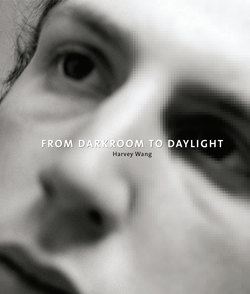Читать книгу From Darkroom to Daylight - Harvey Wang - Страница 9
На сайте Литреса книга снята с продажи.
ОглавлениеPHOTOGRAPHY IS ALWAYS CHANGING
Eric Taubman
It starts in 1839 with the daguerreotype, which is an image on silver-plated copper. That was really the first process, around the same time as the calotype process by Henry Fox Talbot, which is a paper negative process. Very beautiful, very different, and these are things that still can be done now. It’s tricky, the materials are not always easy to get. But the more people that do it, the more reasons there are for manufacturers to keep the materials available. Those were the processes for the next 20 years. But toward the end of that 20-year period was a bit of an overlap with the discovery of wet-plate collodion, which came in around 1853. That was a process more geared toward the masses. At that point, many people decided that they could do photography, and there were packaged kits available. And so it was photography available to a larger world. Its heyday was from the early 1850s through about the early 1870s.
The wet-plate collodion process is a process using the substance collodion, which is also referred to as gun cotton, or nitrocellulose. And it’s basically a glue, or a binder. Collodion comes from the Greek word for glue. And it’s a glue-like material, or syrupy material that you pour onto either glass or tin. The wet-plate collodion process is really related to three types of products: the tintype, which was a positive image on tin; the ambrotype, a positive on glass; and then a glass negative, for printing.
The wet-plate collodion process existed, in some form, right through the 1930s. Because it was an instantaneous process, there was a place for it much after its heyday, 1870. By then, dry plate came along, and that was kind of a revolution, because you didn’t need to shoot the plate wet in the camera, or have your whole darkroom with you wherever you went to shoot. It was on glass, but you could shoot your picture and then take it back to the darkroom, or send it out to somebody to develop. No muss, no fuss. That’s the beginning of that. And that was the precursor to film, which was flexible-base roll film, multiple exposures on a roll. The rest is history. We all kind of know it: black-and-white roll film, color, Kodachrome came in, during the 1930s, 1940s….
